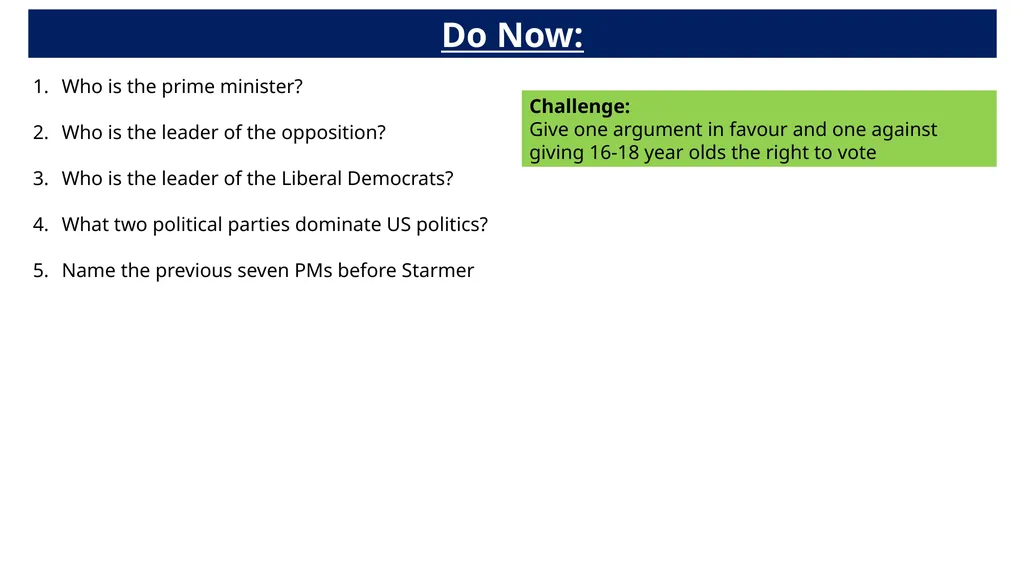Do Now: Challenge: Give one argument in favour and
Author : danika-pritchard | Published Date : 2025-11-08
Description: Do Now Challenge Give one argument in favour and one against giving 1618 year olds the right to vote Who is the prime minister Who is the leader of the opposition Who is the leader of the Liberal Democrats What two political parties
Presentation Embed Code
Download Presentation
Download
Presentation The PPT/PDF document
"Do Now: Challenge: Give one argument in favour and" is the property of its rightful owner.
Permission is granted to download and print the materials on this website for personal, non-commercial use only,
and to display it on your personal computer provided you do not modify the materials and that you retain all
copyright notices contained in the materials. By downloading content from our website, you accept the terms of
this agreement.
Transcript:Do Now: Challenge: Give one argument in favour and:
Do Now: Challenge: Give one argument in favour and one against giving 16-18 year olds the right to vote Who is the prime minister? Who is the leader of the opposition? Who is the leader of the Liberal Democrats? What two political parties dominate US politics? Name the previous seven PMs before Starmer Answers Keir Starmer. Kemi Badenoch Ed Davey Republican and Democrats 5. Rishi Sunak Liz Truss Boris Johnson Theresa May David Cameron Gordon Brown Tony Blair Challenge: Give one argument in favour and one against giving 16-18 year olds the right to vote Politics affects young people – tuition fees, they can join the military at 17, age of consent is 16 They do not pay tax, polls indicate most young people have little interests in politics What will I be studying and how will I be assessed? Paper 1: UK Politics ad Core Ideologies Democracy and Participation Political Parties Electoral Systems Voting Behaviour and the Media Liberalism Conservatism, Socialism Paper 2: UK Government and Non Core Ideology The Constitution Parliament The PM and Executive Relations between branches including the UK Supreme Court Feminism Paper 3: Comparative Politics: The USA The Constitution Congress The Presidency The Supreme Court and Race relations Democracy and Participation Comparative Politics Paper 1: 2hr examination Paper 2: 2hr examination Paper 3: 2hr examination No coursework Learning Objectives: Understand how FPTP works Identify some of its strengths and weaknesses as an electoral system Be developing your own view on whether it should be retained TASK 1: Calculate the size of the Conservative majority at the 2019 election What are the strengths and weaknesses of First Past the Post? How does it work? The country is divided into 650 geographical areas called a constituency Each constituency has an election to decide who will be the Member of Parliament ( MP) The party that wins the most MPs nationally wins the election and the leader of the party becomes Prime Minister If a party wins more than 325 out of the 650 seats they have a majority in the House of Commons What is the size of the Labour majority? 411 – (121+72+9+7+6+5+5+4+4+4+) 174 ( This means they would normally win every vote in the House of Commons) Green Pen Challenge What might the size of this majority mean to the power of the Labour government? TASK 2: What do you notice about the relationship between













